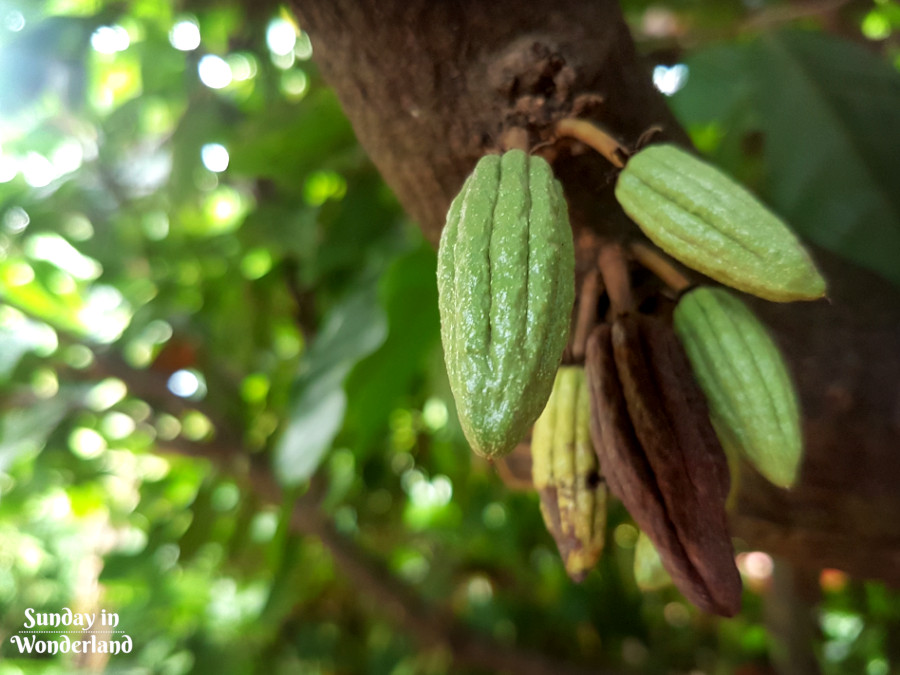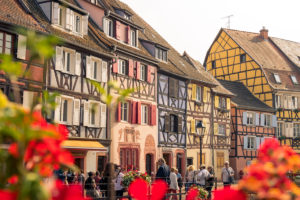The Caribbean islands are perfect for growing some species of popular cultivated plants. The most obvious that you can think of are sugar cane, coconuts, or bananas. But there are a few others which might enchant your senses in the coffee museum in Guadeloupe.
Agriculturists on the island still cultivate the coffee and cocoa as well. While traveling in Guadeloupe you will have an opportunity to discover one of the coffee plantations or museums. And if it comes to cocoa, the Guadeloupian chocolate made of it tastes simply delicious!
Read more: The list of 16 foods, sweets and drinks that you must try in the French Antilles.
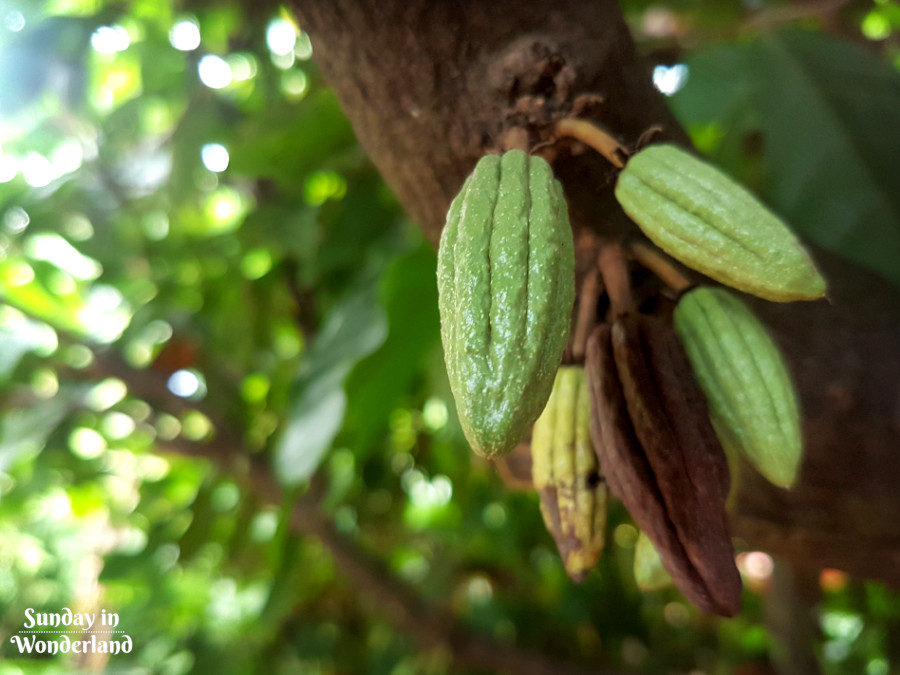
The short history of coffee
You might hear the legend coming from the mountains of Yemen. It tells the story of a herder named Kaldi. One day, while grazing goats on the mountainsides, he noticed that his animals were acting kind of unnatural. He also figured out, that the animals ate red fruits of a bush which was growing nearby.
And this is how the legend of a stimulating plant begins in the mountains of Yemen.
Nowadays, the historians claim, that the first traces of coffee consuming comes from Ethiopia and Yemen of the IX century. But with the evolution of the world’s trade and discovers, the coffee beans arrived as far as the Caribbean.
The Guadeloupian coffee
The idea of cultivating coffee in the Antilles appeared in French heads in XVIII century. In the year 1730, a governor of Guadeloupe sowed the first seeds of Arabica coffee. The growing conditions on the island were perfect. This fact caused the increase of coffee transportation from the Antilles to continental France.
Even today, you can visit a few coffee plantations on the island. You can choose for instance among La Grivelière or Domaine de Vanibel. So if you wish to learn even more about this particular plant, you can visit the Coffee Museum in Guadeloupe (fr. Le Musée du Café) owned by a coffee producer – Café Chaulet.
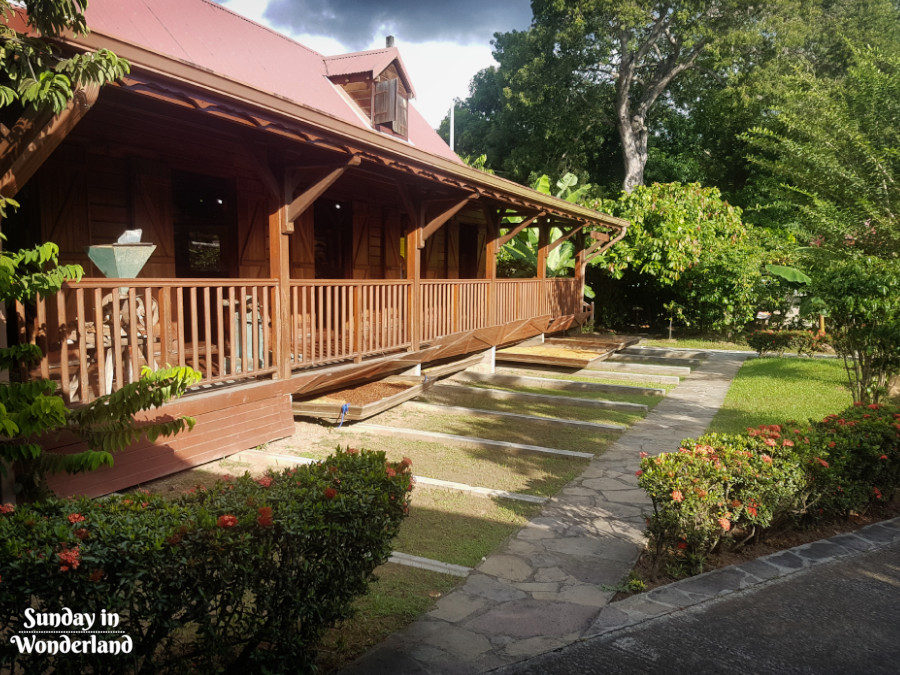
The Coffee Museum in Guadeloupe
Café Chaulet Coffee Museum in Guadeloupe is the one that we visited while renting a car on the island since the public transport in its area is not easily predictable. We found it in the Western Side of the Basse-Terre region, in a city of Vieux-Habitants. Even if the area is not too big, it is surely worth visiting. For the price of 5€, we will get the opportunity to investigate the detailed history of the coffee in Guadeloupe as well as in the rest of the world.
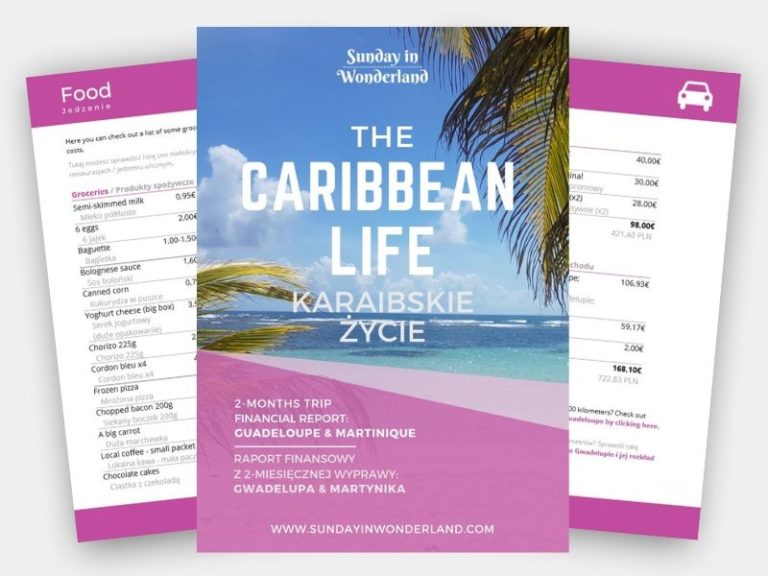
Wanna know the complete
costs of traveling to
the Caribbean?
Grab my free financial report!
Thank you!
Now check your inbox and confirm your email. Remember to check out the SPAM folder as well.
In the museum buildings, we can dive into the story of coffee. From the informative boards (unfortunately, only in French) we will learn more about its characteristics, the production methods and other diverse interesting facts.
We can explore the old tools which served to produce coffee beans, as well as modern machines which are used nowadays. However, one of the most charming exhibition is a room filled with coffee makers and utensils which were used in different countries over the years.
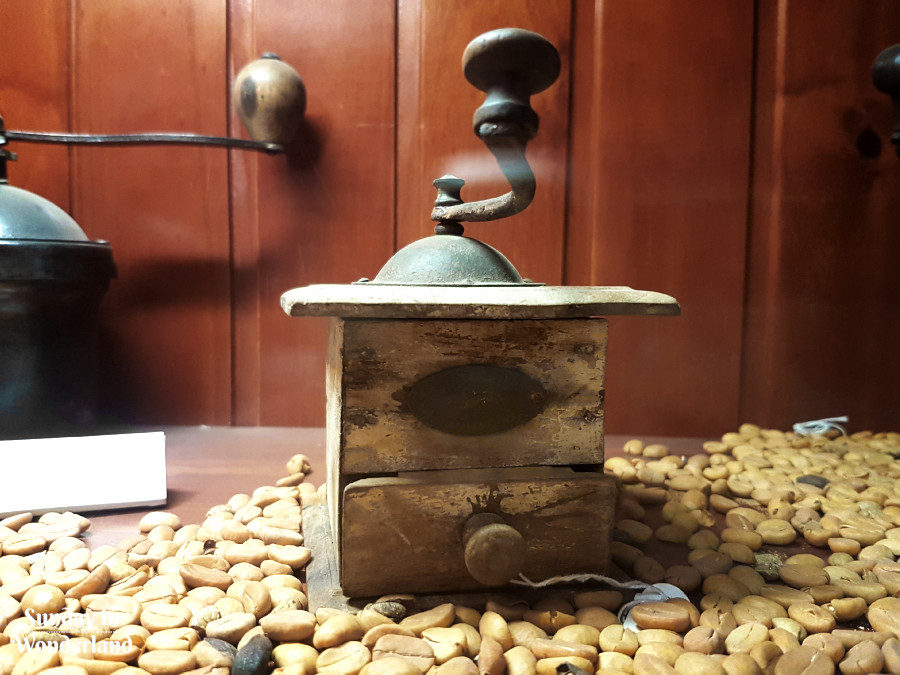
How the coffee from Guadeloupe is produced?
When the coffee plants are ready to harvest, a team of people comes to the plantation. They harvest coffee fruits by hand to ensure their best quality. The same evening the fruits land in a mill which divides the soft part of fruit from a bean which leads them to the wet method of coffee production.
When the beans are separated, they need to pass through the process of fermentation. This ensures the extractions of their taste. After that, the plantation’s employees wash beans and dry them the in sun. After this whole process, they can be distributed to the coffee roasters. In the end, aromatic beans reach the coffee lovers.
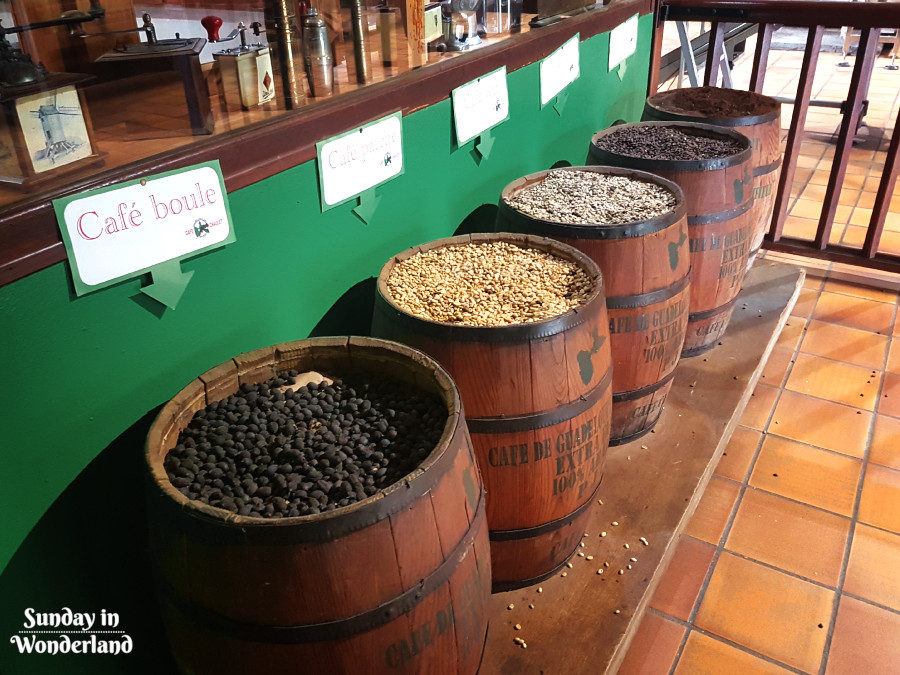
Interesting facts from the Coffee Museum in Guadeloupe:
- Coffee plant tree gives fruits ready to harvest after 5 years and it lives an average of 70 years.
- Coffee plant tree usually grows in the company of other plants, such as cacao tree or a banana tree, which protect the coffee bush from too big sun exposure.
- A yearly harvest from a one coffee plant gives around 50 cups of coffee.
- People n the whole world consumes around 1 400 000 000 cups of coffee each day.
- Long ago, when pickers on the plantation missed some fruits on the bushes, local rodents were coming and eating leftovers. Mice and rats ate the soft part of a fruit, and seed fell down on the ground. Children were collecting those seeds to transform them into a “rat coffee”.
The cocoa history
Coffee production facts are only one part of the knowledge that we can gather in the Coffee Museum in Guadeloupe. This place can teach us a bit about cocoa too.
Cocoa appeared in Europe for the first time, when Spanish brought it to the continent in the XVI century. In France, it was the Queen Anne of Austria who launched the tradition of drinking cocoa mixture on the French court. Since then, preparing this drink became considered as a luxury elite’s ritual.
In 1674, English created the first chocolate pudding by adding some eggs and milk. Coenraad Van Houten, a Dutch pastry chef, in 1829, invented the machine which allowed him to separate a cocoa powder from butter. After that, the first chocolate bar was born in 1869.
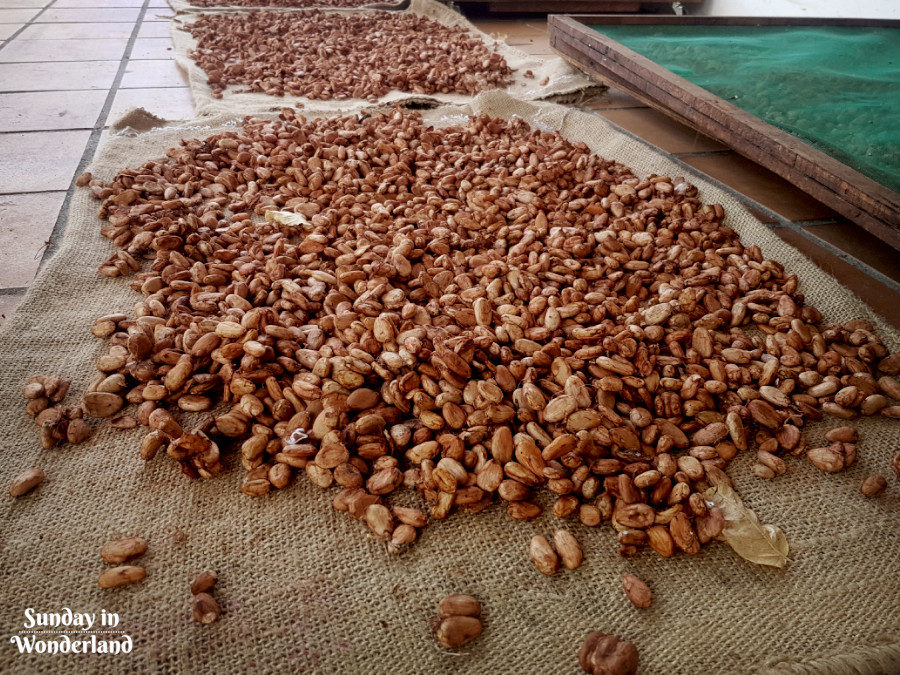
The aromatic degustation
After an inspiring visit to the exhibition interiors, we can enjoy a degustation of local coffee or cocoa (included in the museum ticket price). The taste of fresh cocoa is amazing and totally different from the cocoa powder’s taste that we can try in continental Europe. So for me, a refreshing and lively aroma was a pleasant surprise. We end our visit in the museum’s souvenir shop, where we can buy some Café Chaulet and bring it home.

The world has many tastes, and coffee or cocoa can taste differently in many countries. What was your best experience if it comes to those drinks?
Like it? Pin it!
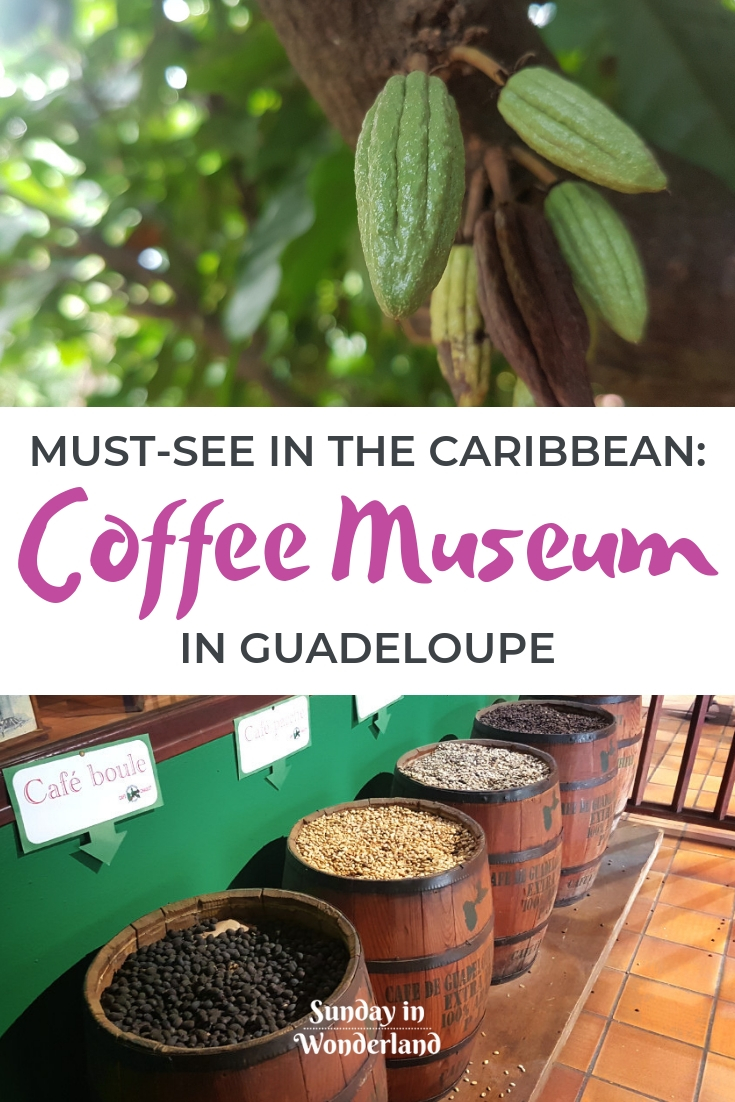
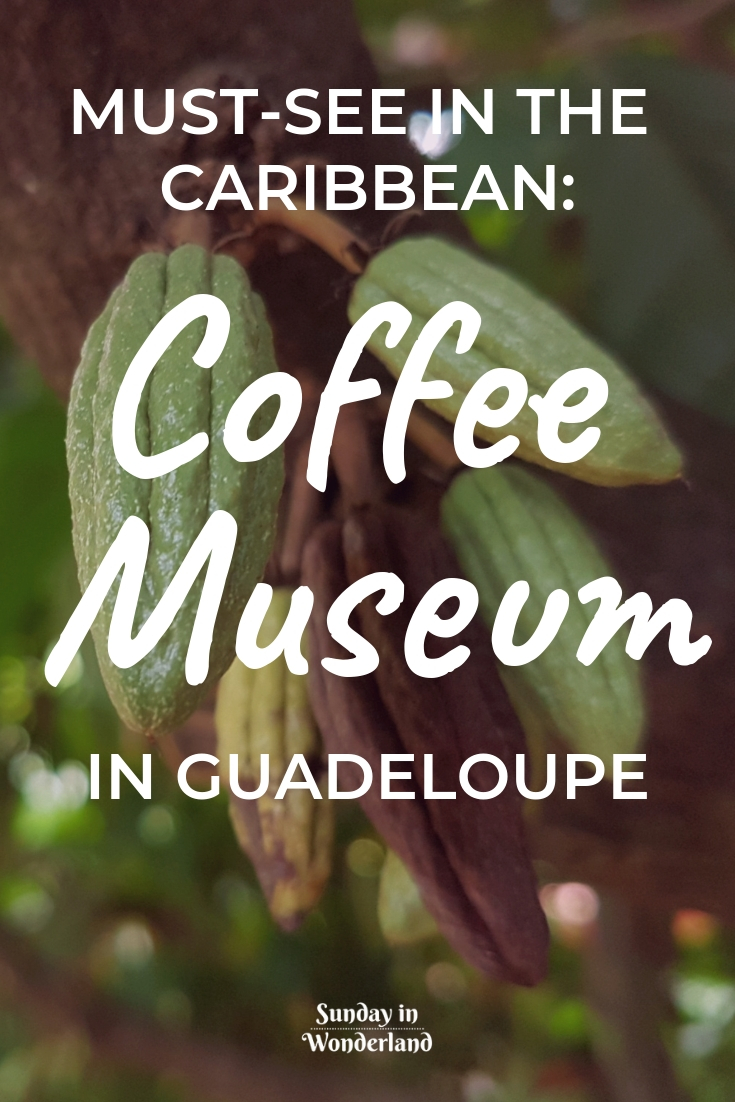
Dominika is a founder of Sunday In Wonderland and she recently switched her life to be local independent. She aims to travel the world and admire all of its wonders. She is much focused on sustainable life, self-development and making this world a better place.

